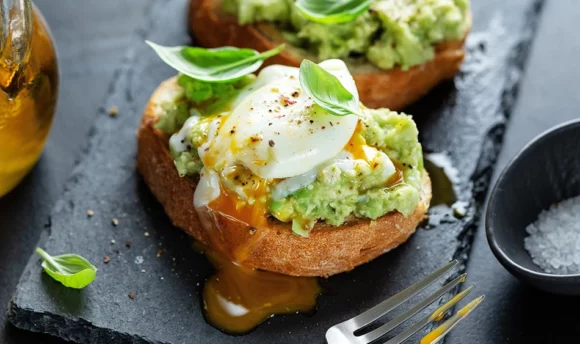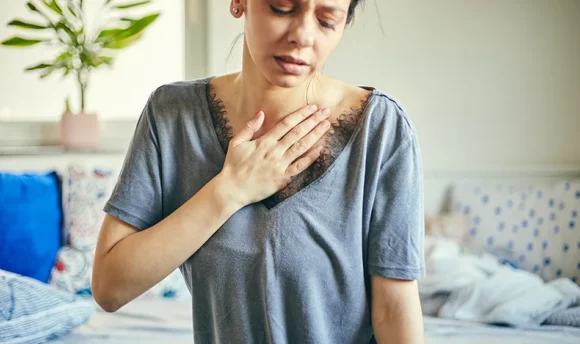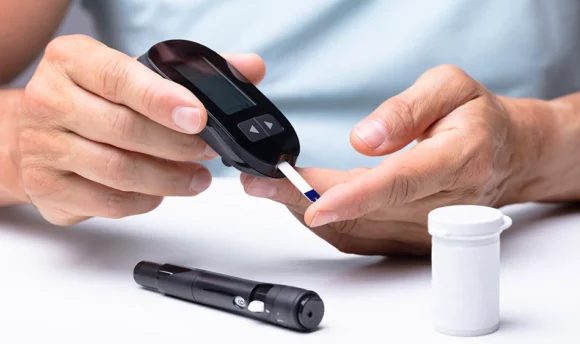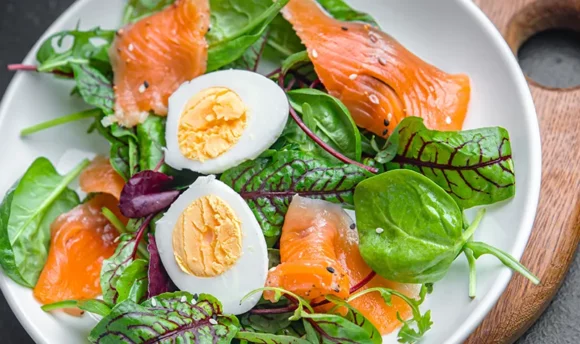Can I Go Keto Without a Gallbladder? Tips and Side Effects
The ketogenic diet requires an increased fat intake. If those without a gallbladder do not have stored bile to digest fats, can they safely follow a keto diet? Here is how to reap the full health benefits of ketosis without a gallbladder.

If you’re wondering whether you can lose weight with the keto diet without a gallbladder, the answer is yes.
Gallbladder removal may make fat digestion more difficult for your body. Following gallbladder removal surgery, doctors recommend you eat a low-fat diet. The ketogenic diet requires a high fat intake. How can you make keto work without a gallbladder?
Read on to learn whether a ketogenic diet without a gallbladder is possible and tips to stay in ketosis.
Keto Without a Gallbladder: Is It Possible?
After gallbladder removal surgery, your liver must work harder to produce bile and digest fat. Excess fat consumption might result in an upset stomach. However, you can enjoy a keto diet without a gallbladder if you adjust the diet to eat as little fat as possible while remaining in ketosis.
Managing your fat intake after gallbladder surgery isn’t hard, but it requires careful eating and listening to your body.
Your liver produces bile that contains digestive enzymes needed to process fat. The gallbladder stores excess bile. Usually, when someone consumes more fat, the gallbladder releases bile to aid fat digestion. However, if you don’t have a gallbladder, the liver will need to increase bile production when you consume fatty foods.
The keto diet requires eating fats while cutting your carb intake and sugars. The body adjusts to digesting fats for energy rather than sugar. This stage is called ketosis. When you enter ketosis, your body will burn fat to aid weight loss.
Many doctors recommend you consume less fat while recovering from gallbladder removal. Yet, this doesn’t mean you cannot start the ketogenic diet. You may have to be more patient and ease your body into the diet. However, losing weight with keto is possible without a gallbladder.
The trick is to consume as few fats as possible while maintaining ketosis. How much fat you need and can digest depends on your body. If you feel sick after overeating fat, speak to a doctor. Use a meal planner to track the fat you consume and take notes about side effects.
What Happens Without a Gallbladder?
The gallbladder stores extra bile produced by the liver. Without your gallbladder, your liver must work extra hard to produce bile when you eat fats. While most people can return to eating a regular diet, some may need to limit their fat intake after surgery for gallbladder removal.
For most people, the liver will produce 27 to 34fl oz of bile per, traveling down the bile ducts. Without your gallbladder, the liver cannot store excess bile to ease fat digestion.
Immediately after removing your gallbladder, you must eat carefully to help your liver adjust. Doctors may recommend you consume clear liquids and low-fat foods. Once your body acclimates, you can include more fat. However, as there is no stored bile in your body, you may experience side effects – such as diarrhea or abdominal pain.
Some evidence suggests consuming smaller meals with plenty of soluble fiber can improve fat digestion. Lean protein, whole grains, and vegetables will help your digestive health.
Even long after recovery, your body will not store bile. Whenever you eat fatty foods, you will put extra stress on your liver to produce bile. Since the ketogenic diet is high in healthy fats and fats require bile, you will need to pace your high-fat intake when eating keto.
Consuming too much fat too quickly may have unpleasant side effects. While it is not immediately life-threatening, you may suffer from diarrhea, cramps, gas, or bloating. Moreover, you may not get enough nutrients if you cannot digest fat.
As a result, you may need to take extra steps to eat keto healthily without putting unnecessary pressure on your liver.
How to Follow a Keto Diet Without a Gallbladder: 6 Actionable Tips
It’s essential to listen to your body and seek medical advice when going keto after gallbladder removal. Here are a few tips to help your digestive system adjust to eating more fats on the keto diet.
#1 Transition slowly
Starting the keto diet is challenging for most people. If you don’t have a gallbladder, you might find it harder. Keto diets require strictly high-fat meals to increase blood ketones. However, you must transition slowly if you don’t have a gallbladder. After following a low-fat diet, you may suffer side effects from going keto too quickly.
Start by eating small amounts of healthy fats, such as avocados, nuts, or a drizzle of olive oil on a salad. Take the transitioning period as slowly as you need.
Eating smaller, more frequent meals is an excellent way to help your body’s digestive enzymes process fats. Rather than consuming lots of fat in one go and overwhelming your liver, try to spread your fat intake over the day.
#2 Eat foods that are packed with dietary fiber
Fiber is your friend when eating keto. There are two types of fiber: insoluble and soluble fiber. The former adds bulk to stool and helps food pass quickly through the digestive tract and small intestine. You’ll find it in wheat bran, vegetables, and whole grains.
Soluble fiber lowers excess cholesterol and blood sugar levels. Moreover, it helps your body digest fat more slowly, which is suitable for people with gallbladder disease. By drawing water into the colon, soluble fiber eases digestion and puts less stress on the liver. You’ll find keto-friendly soluble fiber in:
- Brussel sprouts: 3.8g fiber
- Avocado: 6.7g fiber
- Broccoli: 2.6g fiber
Although it’s best to get your fiber from foods, you may also consider taking fiber supplements or fat-soluble vitamins (such as vitamins K, A, E, or D). In addition, many people without gallbladders take an ox bile supplement to help digest fats.
#3 Use MCTs instead of LCTs
Medium-chain fatty acids or medium-chain triglycerides do not require bile. Unlike long-chain fatty acids, the digestive system immediately absorbs MCTs or MCT oil. If you don’t have a gallbladder, MCT oil is an excellent way to get fat into your diet.
MCT oil provides quick energy, making it a good food choice to incorporate into your weekly workout routine. Foods containing MCT:
- Coconut oil: 55% MCT
- Palm kernel oil: 54% MCT
- Whole milk: 9% MCT
- Butter: 8% MCT
However, overeating MCT oil can cause a fatty liver or upset stomach. Try to limit your fat intake to no more than 50% MCT.
#4 Drink enough water
Eating a high-fat diet without your gallbladder may cause digestive issues. Up to 20% of people undergoing gallbladder surgery suffer from diarrhea. Diarrhea can drain vitamins, minerals, and fluids from your body, which can cause dehydration. To stay healthy, you must drink enough water.
Drinking plenty of water has other health benefits, such as helping lose weight and maintaining healthy digestion.
#5 Calculate your macros
There are three main categories that provide energy: protein, carbohydrate, and fat. Counting macros means calculating the amount of protein, carbs, and fats you eat daily. When trying to reach ketosis, you must consume large amounts of fat with minimal carb intake. Use the keto calculator to know your exact macros.
However, without your gallbladder, you must carefully balance the amount of fat you eat. Essentially, you want to eat enough fat to reach ketosis and enable weight loss. But you don’t want to overeat dietary fats your liver cannot cope with.
Counting macros can help you:
- Lose stubborn fat
- Maintain lean muscle mass
- Stave off hunger cravings
When starting the ketogenic diet, it’ll likely take some experimenting to determine how much fat your body is comfortable with. Keep track of your macros and note any side effects. As you learn what your liver can cope with, it’ll get easier to stick to the keto diet.
#6 Consume ginger tea
Your liver will need all the help it can get. Some foods naturally help the liver produce more bile. To get the full effect, chew or drink these foods slowly to signal the liver to start producing bile. Alternatively, eat or consume these foods as an appetizer. Sipping on ginger tea is an excellent way to kickstart your liver.
Moreover, ginger can help ease stomach upset, nausea, or abdominal pain. If you suffer from keto side effects worsened without your gallbladder, ginger tea may be a good remedy.
Here are other foods that will help your liver out:
- Artichokes
- Dandelion root
- Mint
- Parsley
- Radish
- Celery
- Cucumber
- Turmeric
- Green tea
- Sauerkraut
- Dark chocolate
- Kale
- Dill
- Sesame seeds
- Mustard
- Ox bile supplements
Side Effects of Keto Without a Gallbladder
Many people suffer from keto flu, but the side effects may worsen after gallbladder removal. Your body has to work harder at digesting fats. Speak to a doctor if you’re concerned about keto side effects or if they persist. Here are a few common side effects:
- Bad smelling or off-color stools
- Bulky and soft stools
- Diarrhea
- Abdominal pain
Seek medical attention if you experience more severe side effects, such as:
- Persistent, worsening, or severe pain
- Severe nausea or vomiting
- Jaundice
- No bowel movements
- Inability to pass gas
- Chronic diarrhea
How to Prevent Gallstones on the Keto Diet
Gallstones are small, sometimes painful stones in the gallbladder. You may develop gallstones if your bile contains excess cholesterol or bilirubin or if there are insufficient bile salts. If you wish to follow a ketogenic diet, you may need to transition slowly or wait until your gallstones are removed.
However, research suggests that a high-fat diet can prevent gallstones. Yet, you must eat the right kinds of fat. To reduce the risk of developing gallstones while eating a keto diet, avoid high saturated fats found in butter, lard, ghee, fatty meats, and cheese. Unsaturated fats can help reduce HDL (bad cholesterol) in our blood and prevent gallstones.
A Word From Our MD
While you may think you can’t reap the full benefits of the keto diet when your body struggles to digest high-fat foods, you’d be wrong.
Following a ketogenic diet requires eating lots of healthy fats while avoiding carbohydrates. When you don’t have a gallbladder, you must balance eating enough fats to reach ketosis without overloading your liver.
Drinking plenty of water and ginger tea, counting macros, eating the right kinds of fat (LPs and healthy fat), and transitioning slowly into the keto diet are all excellent steps after gallbladder removal.
While many people can enjoy the ketogenic diet without their gallbladder, some people’s bodies may struggle to adjust. Speak to a medical expert and listen carefully to the amount of fat your body can handle.
Conclusion
The ketogenic diet is different for everyone. Whether you have a gallbladder or not, you should diet at your own pace. You may not be able to eat as many fatty foods as others which may mean your weight loss journey moves more slowly. Keto is possible without your gallbladder but reaching ketosis requires a careful balance of fat intake.

















































 Select your language:
Select your language: 








